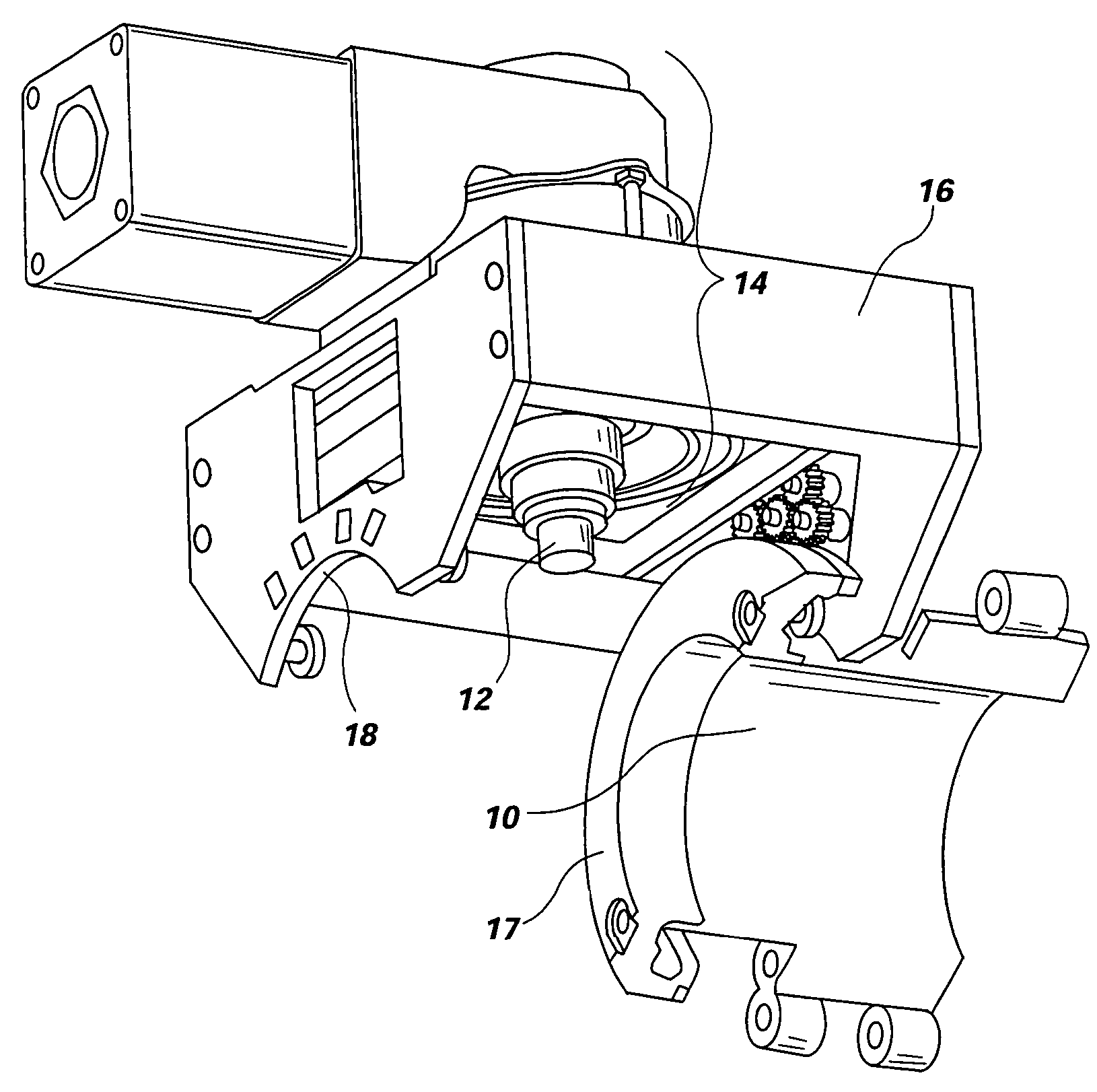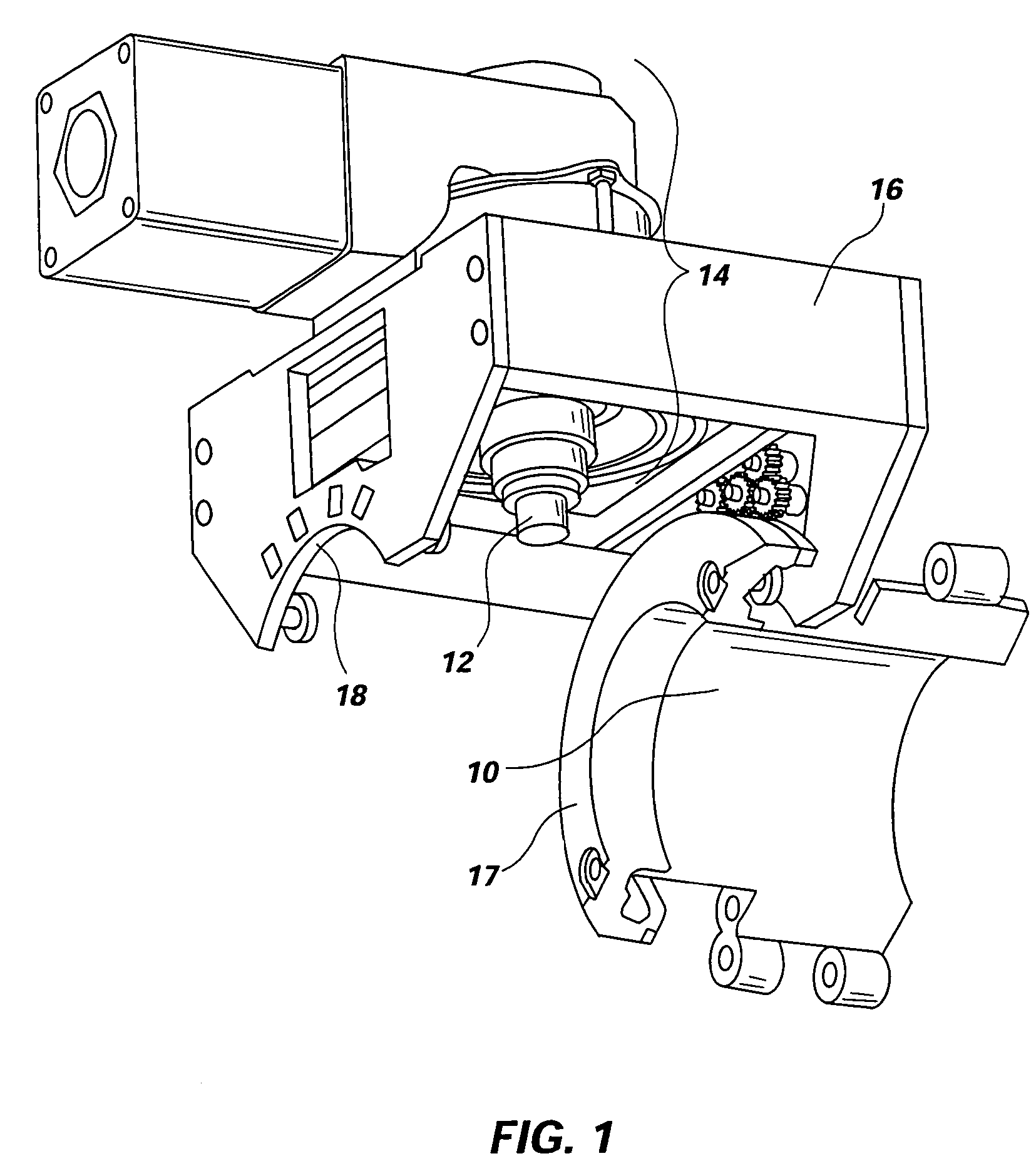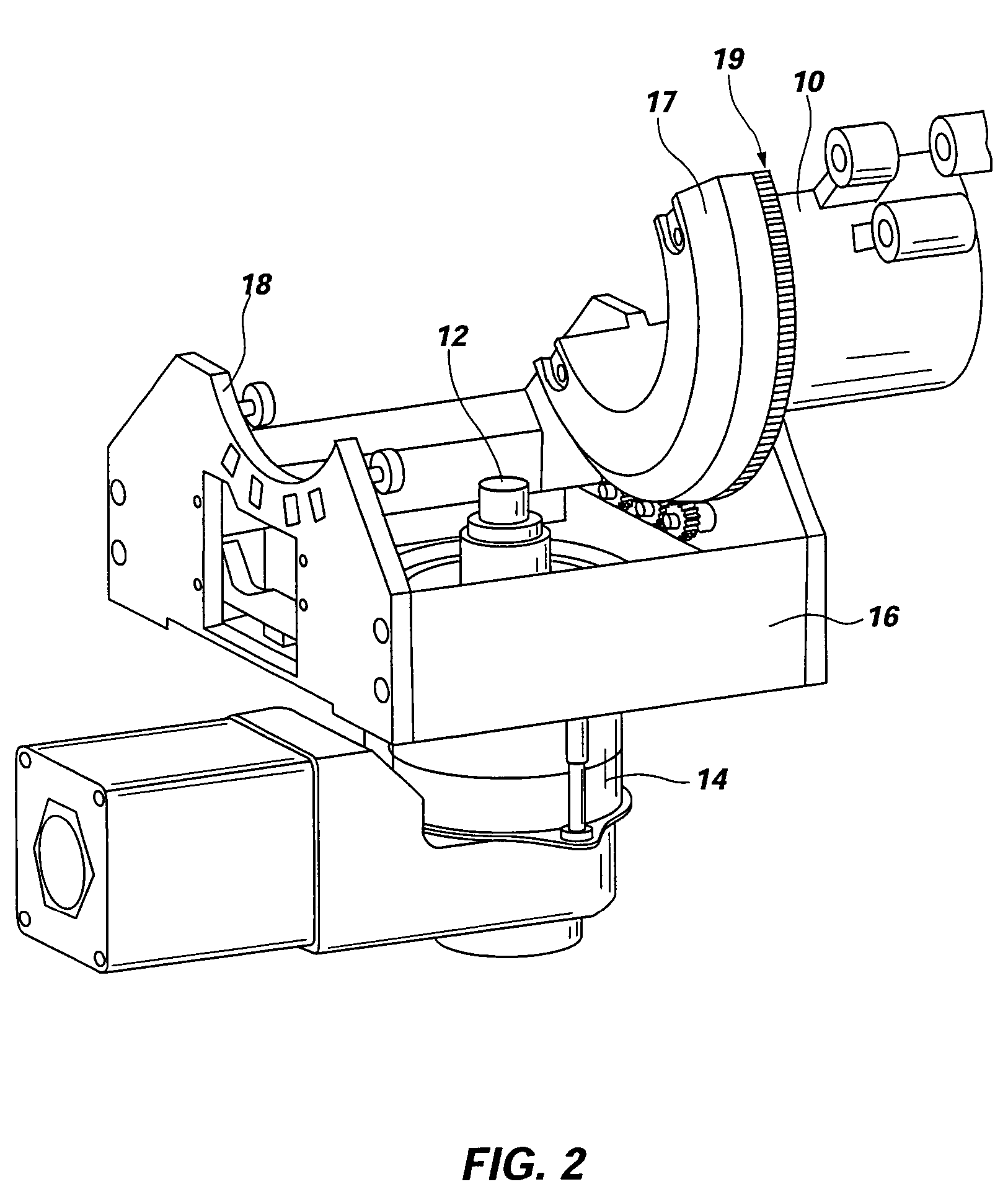Out-of-position friction stir welding of high melting temperature alloys
a high melting temperature alloy and friction stir technology, applied in the field of friction stir welding, can solve the problems of compromising welds, no tool that is capable of functional welding materials having higher melting points, and depletion of non-metallic reinforcement materials which have been joined with original workpiece materials to create alloys at welds
- Summary
- Abstract
- Description
- Claims
- Application Information
AI Technical Summary
Benefits of technology
Problems solved by technology
Method used
Image
Examples
Embodiment Construction
[0050]Reference will now be made to the drawings in which the various elements of the present invention will be given numerical designations and in which the invention will be discussed so as to enable one skilled in the art to make and use the invention. It is to be understood that the following description is only exemplary of the principles of the present invention, and should not be viewed as narrowing the claims which follow.
[0051]Friction stir welding of aluminum has been well established as a cost effective and high quality joining method. Further development of aluminum FSW has lead to joining aluminum pipe for specific applications. These methods and procedures have been published and documented but have little commercial value because of limited applications.
[0052]In contrast, steel pipe is widely used for a much greater variety of applications and for more critical purposes. Moreover, weld quality is critical to handle pressures, corrosive fluids, and prevent life threate...
PUM
| Property | Measurement | Unit |
|---|---|---|
| melting temperature | aaaaa | aaaaa |
| force | aaaaa | aaaaa |
| outer diameter | aaaaa | aaaaa |
Abstract
Description
Claims
Application Information
 Login to View More
Login to View More - R&D
- Intellectual Property
- Life Sciences
- Materials
- Tech Scout
- Unparalleled Data Quality
- Higher Quality Content
- 60% Fewer Hallucinations
Browse by: Latest US Patents, China's latest patents, Technical Efficacy Thesaurus, Application Domain, Technology Topic, Popular Technical Reports.
© 2025 PatSnap. All rights reserved.Legal|Privacy policy|Modern Slavery Act Transparency Statement|Sitemap|About US| Contact US: help@patsnap.com



